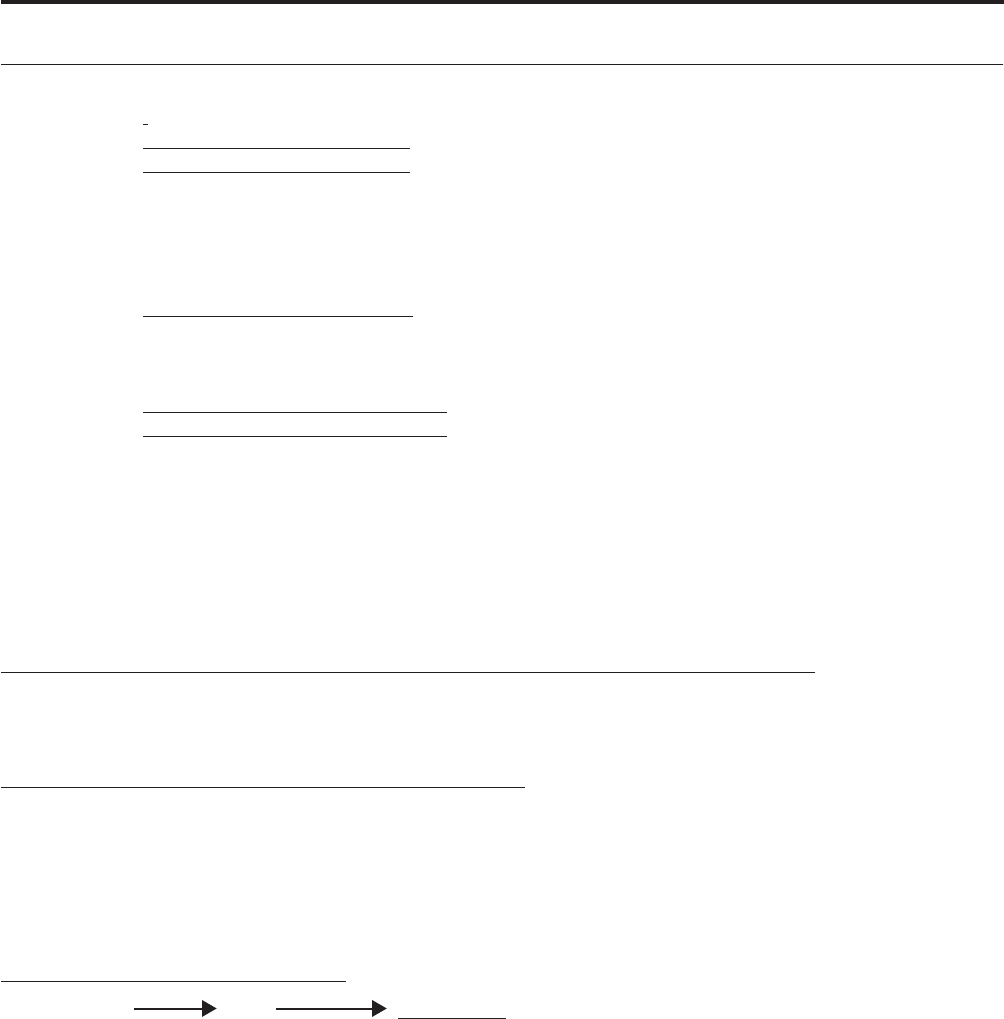
6. PROGRAMMING OPERATIONS
EO1-11095
6-40
6.23 TAX TABLE PROGRAMMING
...... ......
...... ......
......
(The description for the TAX RATE in
TYPE 2 is also applied to this case.)
TYPE 1: TAX 1 FULL BREAKS (COMBINATION OF NON-CYCLIC AND CYCLIC BREAKS)
|Max.amount non-taxable| [TX1/M]
|Max.amount for 1¢ tax levied| [TX1/M]
|Max.amount for 2¢ tax levied| [TX1/M]
Repeat up to the “A” Break
|Max.amount for N¢ tax levied| [TX1/M] ... “A” Break (Non-cyclic Break Limit)
[ST] (to indicate the completion of Non-cyclic Breaks)
|Max.amount for N + 1¢ tax levied| [TX1/M] (beginning of Cyclic Breaks)
|Max.amount for N + 2¢ tax levied| [TX1/M]
Repeat up to the “B” Break (“B” Break - “A” Break = Multiple of $ 1.00; max. $9.00)
[AT/TL] (to complete this tax table programming)
NOTE: The break amount entry must be a maximum of 4 digits (1 to 9999 resulting in $0.01 to $99.99)
TYPE 2: TAX 1 COMBINATION OF NON-CYCLIC BREAKS AND % RATE
First set all the breaks up to the “A” Break entry and the [ST] key depression as shown in TYPE 1.
↓
|TAX RATE applied when exceeding the “A” Break amount|
(0.0001 to 99.9999 (%); use the [ . ] key if a decimal portion is contained. Examples: To set 5 %, enter 5. To set
5.26 %, enter 5.26. The fraction of the amount resulting from this % rate calculation will be rounded off.)
↓
[AT/TL] (to complete this tax table programming)
TYPE 3: TAX 1 % RATE ONLY
0 [TX1/M] [ST] |TAX RATE| [AT/TL]
NOTES: 1. For Tax 2, Tax 3, Tax 4 table programming, follow the same procedure in TYPE 1, 2, or 3 on the
preceding page, using [TX2/M] or [TX3/M] or [TX4/M] instead of
[TX1/M]
.
2. If multiple tax tables are programmed, the Tax 1 table must be set first, then Tax 2, Tax 3 and
Tax 4. The Tax 1 table setting will automatically reset all of the old Tax 1, 2, 3. and 4 tables if
they have been programmed.
3. No second depression of the [ST] key is allowed within one tax table programming.
4. A maximum of 99 breaks can be entered for Tax 1 to Tax 4 tables altogether.


















